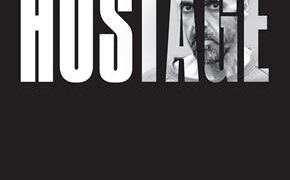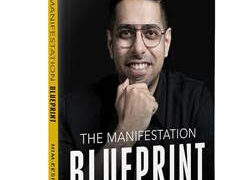
My Tryst with Cricket
By Vasoo Paranjape
My tryst with cricket began way back in the 1940s. I lived in a typical Maharashtrian Brahmin joint family,
in a sprawling ancestral house located in the leafy suburb of Matunga, Mumbai. Along with my parents and two sisters, there was an assortment of aunts, uncles and lots of cousins, all under one roof at Ganesh Bhuvan, the house my grandfather, Ganesh Narayan Paranjape, built and named after himself.
Two of my aunts came from cricket-loving families in Pune. My elder aunt’s brother, a diehard cricket fan, lived
with us as he was working in Mumbai at the time. He was the one who regaled me with cricketing anecdotes, and he took me to watch local cricket matches and sometimes even to the big matches at the Brabourne Stadium. He spoke about well-known cricketers, like D.B. Deodhar, S.G. Shinde, S.W. Sohoni, Khandu Rangnekar and Dattu Phadkar (whowas then the poster boy of Indian cricket).
By that time I had started playing for my school and my interest in the game had increased. I must have been ten or
twelve years old when I watched Denis Compton and Vinoo Mankad playing at the Cricket Club of India in a Ranji final.
By 1947–48, I was training at the New Hind Club nets and became a member of the Dadar Union Sporting Club at Matunga. I was given a two-year playing membership by the P.J. Hindu Gymkhana in Mumbai. I was a left-arm
slow-spin bowler, and I used to bowl the chinaman as a regular part of my armoury.
It was a big occasion for me when, one day, I saw all the Indian players playing at the adjoining Matunga Gymkhana
ground, including the great Vijay Merchant. Watching me bowl, Merchant called me over for a chat. However, I was so awestruck that I couldn’t muster the courage to respond. In retrospect, my love for the game of cricket originated with that encounter!
I studied at the King George School and was the captain of the junior team there. When King George played in
the Harris Shield tournament for the first time ever, I was leading the team. And I led the team through our first-ever attempt at the Giles Shield tournament as well—we became champions that very year. I was lucky to be selected as skipper for the Giles Shield after my miserable debut in the Harris Shield. (Playing at number eleven, I was run out for nought in the Vinoo Mankad style—the bowler taking off the bails at the runner’s end before delivering the ball—despite the numerous warnings from the captain and senior players that this might happen to me!)
During this period, I had the advantage of being coached by the great Homi Vajifdar, who was the first Bombay
captain. Vajifdar was a big man with powerful wrists. He was an all-rounder and a great slip fielder, and he played for Parsee Gymkhana. He was the coach at the Tairsee nets conducted by the P.J. Hindu Gymkhana. Leading by example, Vajifdar taught us the value of being a good person. He was disciplined, meticulous and had an eye for detail. If you trained with him, your shoes had to be properly polished and your cricket attire had to be perfect. He always said, ‘Whatever you do, you must be the best at it.’ Though he was not imposing in any way, he commanded respect.
He had a liberal, democratic approach to the game and gave everyone a chance. He instilled in us the idea of fair play and taught us the meaning of sportsmanship. The Tairsee wicket was so immaculately prepared and maintained under his supervision that some of the older players always wanted to go and play there to get back in form. My cricketing future took shape under this great man, and my career progressed in the right direction. I was lucky to have him as a coach in my formative years.
Since I was made an honorary playing member of the P.J. Hindu Gymkhana, I represented them in local matches. I recollect having once taken 4 wickets in 4 balls in a Purshottam Shield match. This feat had been previously achieved only by Dattu Phadkar, and I had equalled it. Then, Vinoo Mankad became the coach at the P.J. Hindu
Gymkhana. And some time later, I was given the privilege of becoming the head coach at the Tairsee nets. That was a
proud moment for me. This progression, from 1953, led me to Dadar Union, with which my association has continued till today and will continue for as long as I live.
It took me some time to get into the Dadar Union playing eleven, mainly because they were such a strong team. Playing under Madhav Mantri and with Ramnath Kenny, the Amladi brothers, Naren Tamhane and P.K. Kamat was a lifetime’s cricketing experience. We played the Kanga League, the Talim Shield, the Purshottam Shield, the Comrade Shield. And we built an outstanding record. I wonder if any other team has won the Comrade Shield, the Purshottam Shield and the Talim Shield as many times as we did.
No account of Dadar Union can be complete without a mention of the bowling duo of V.S. ‘Marshall’ Patil and
Urmikant Mody. Hardly a match passed without them giving us an early breakthrough.
My time at Dadar Union taught me just what a club can mean to a player and what a player should mean to a
club. When I watched how Dadar Union went about things and compared that with how some of the other clubs went
about their business, it became amply clear to me that I was fortunate to be a part of this great institution. I am not criticizing other clubs, but for me Dadar Union was the right club. And I fit in at the club. It is the sense of belonging it evokes that makes a club great.
As a captain, I was always conscious of the responsibility I had to each and every player of Dadar Union. Having
come up through the ranks myself in a club that had a proud tradition and put a strong accent on success, I knew
what a youngster trying to get in and make his mark would feel like. I knew when someone needed an arm around the shoulder or just a quiet word. After all, the captain’s role is not limited to calling heads or tails at the toss and setting the field. The captain must always remember that while he is leading his men, he is also representing his club. I spent a lifetime imbibing the Dadar Union ethos. What good would it have been had I not passed it on to the generations that came after?
(‘Excerpted’ with permission from Penguin Random House India)
[the_ad id=’22722′]


















